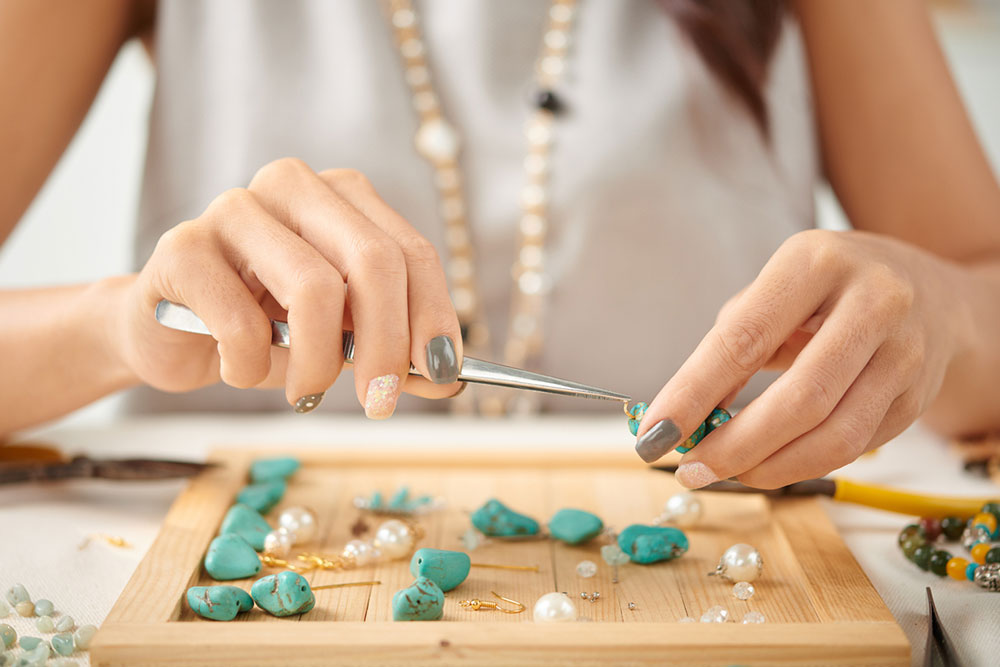8 mistakes that can ruin one’s jewelry

Jewelry is an excellent way to add interest and flair to any outfit. Jewelry, be it made of metal or gems, tends to be expensive and requires quite a bit of care. However, people make common mistakes while storing or cleaning their jewelry, which can ruin it. Read on to learn about a few such mistakes and how to avoid them to keep one’s jewelry looking as good as new.
1. Forgetting about regular cleaning and maintenance
Experts say one of the most common mistakes people make when it comes to jewelry is not cleaning it enough. This includes both professional and at-home cleaning. Professional cleaning helps restore the shine of the stone or metal and fix any damage. It is generally a good idea to have jewelry cleaned professionally once every six months to a year to repair any wear and tear.
But that may not be enough. Supplement this annual cleaning with daily at-home maintenance to avoid dirt or debris buildup. Invest in a quality jewelry cleaner, or use a mild dish detergent and some warm water with a microfiber cloth.
2. Using abrasive cleaners at home
While it may seem like a stronger cleaner might give jewelry a more thorough clean, that is not the case. Using abrasive cleaners on jewelry can cause it to lose its shine and finish. Softer stones like pearls, opals, emeralds, turquoise, and coral generally do not fare well in the face of harsh chemicals. That is why avoiding toothpaste, lemon juice, and other abrasive cleaners on jewelry is best. Stick with a mild dish soap and a soft child’s toothbrush instead.
3. Exposing jewelry to water
Remove any jewelry before entering the shower, hitting the gym, or jumping into the pool. Water and sweat can cause scum development, which damages jewelry in two distinct ways. Exposure to shampoos, conditioners, and other chemicals impacts the appearance of certain metals. Water can loosen the glue that holds pieces together on costume jewelry or cause rusting.
4. Storing necklaces without clasping them first
Tangled necklaces can be a real struggle. Luckily, there’s an easy way to avoid this mess: simply clasp the necklace before hanging it on a necklace tree or storing it in a box with sorters.
If an old knot needs to be eased out, experts recommend laying the necklace on a table and gently prying the knot open with needles. Avoid doing this while the necklace is suspended in the air, as gravity could worsen the situation. If this problem persists, consider using straws or other tubing to separate necklaces.
5. Wearing rings that are not sized properly
Wearing the wrong-sized ring can increase the risk of breakage! Many people resort to metal ring sizers instead of having their jewelry resized. These can leave big scratches on the ring and even cause it to become misshapen. Use athletic tape or a Band-Aid for a quick temporary fix, and get the ring resized as soon as possible.
6. Failing to get jewelry insurance
Own a lot of fancy pieces of jewelry? Spend a little more to get them appraised by a certified gemologist and insured accordingly. Most homeowners’ and renters’ insurance policies have a jewelry provision that could help. An add-on policy may be necessary for more comprehensive coverage for expensive pieces.
7. Storing jewelry inappropriately
Pay attention to how and where one stores jewelry. Warm and humid environments, such as bathrooms, can cause some pieces to tarnish faster. Jewelry stored in areas with free-flowing air is also likely to get dustier and grimier, requiring frequent cleaning. Similarly, storing pieces together may increase the risk of scratching or scuffing.
It is best to use a separate jewelry box with sorters or invest in small padded boxes. These storage solutions will reduce exposure to humidity and dirt and significantly decrease damage caused by scuffing.
8. Wearing delicate pieces to bed
This may not seem obvious initially, but wearing jewelry to bed could result in breakage or losses. The constant tossing, turning, and friction against the sheets could loosen the prongs that hold the stones or damage softer gems like pearls or opals. Moreover, threads from one’s bedding could get caught in the jewelry, resulting in tears in the sheets.
If that wasn’t enough, many people also experience swelling in their fingers in the morning. This could stretch or bend the rings or cause significant pain and discomfort. It is always safer to remove jewelry before going to sleep.



